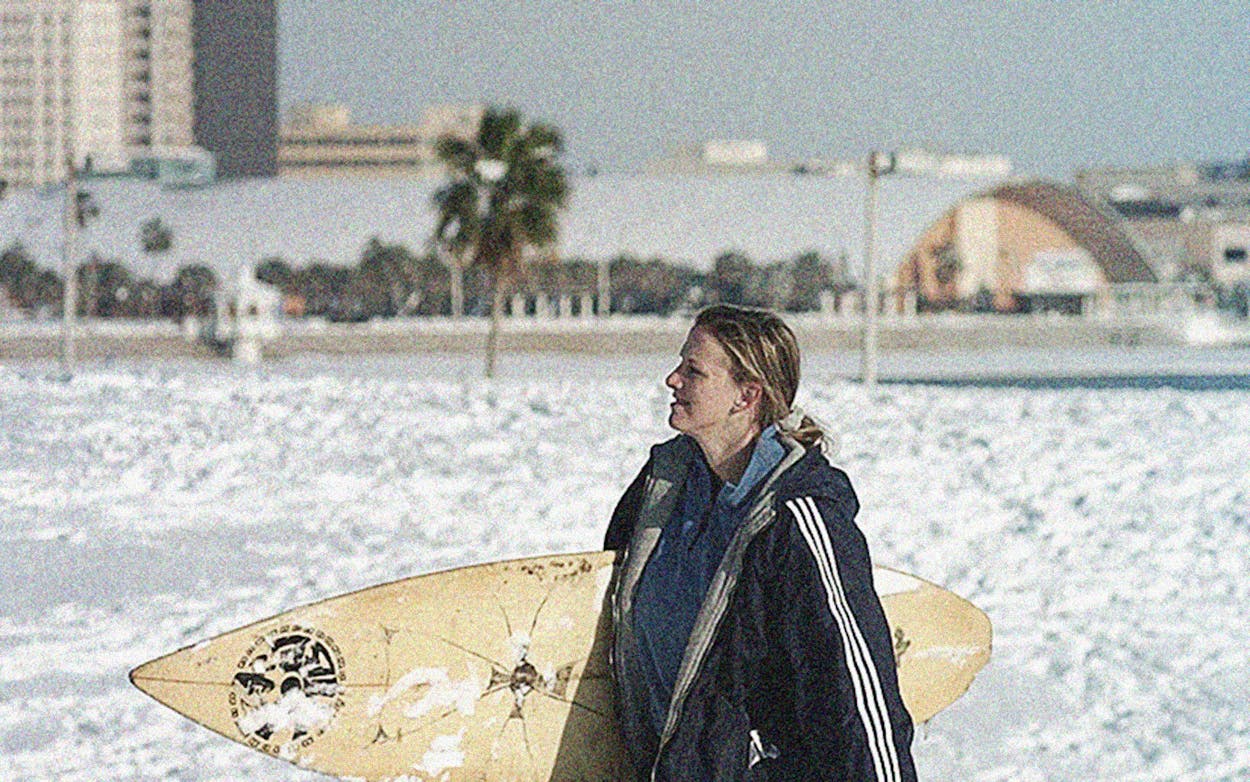On Christmas Day 2004, South Texas saw its first accumulation of snowfall in 109 years. It’s hard to overstate what a big deal this was in the region—the McAllen Monitor published a keepsake section of the paper to commemorate the white Christmas, and its daily edition for December 26 featured a front-page story on it with Capra-esque prose: “On Christmas Day, most children jump out of bed and run straight to the tree to see what Santa brought while they were sleeping—but not this year.” The occasional flurry there is rare enough—the 2017 snowfall from Winter Storm Benji, which didn’t accumulate enough to be measured, was headline news—but several inches of snow (three and a half, in McAllen, and an inch and a half in the lower Valley) is the stuff that makes for a Christmas miracle.
And, as the Wall Street Journal reports this week, some families are still trying to keep the magic from decades ago alive—despite the cruel laws of physics. According to reporter Elizbeth Findell (who wrote on Twitter that she’d been itching to write about this since moving to McAllen in 2010) families around South Texas who stashed snowballs in their freezers have since found their Tupperware containers devoid of anything other than evaporated shards of ice:
It turns out snow deteriorates and becomes denser over time, according to Noah Molotch, a professor who directs research into snow hydrology at the University of Colorado-Boulder.
“I don’t have a lot of experience with storing snowballs in freezers for 15 years, but…when you’re opening and closing the freezer over time you’re letting water vapor escape from the snow,” Mr. Molotch said. “Eventually all of the ice would vaporize.”
The Journal‘s report follows Texans as they reminisce about that day, and the tender feelings of loss they’ve experienced as the physical representation of that fades with freezers’ limitations. (One Brownsville resident, quoted in the story as saying the snowfall “felt like winning the lottery,” told the Journal she planned to leave the snowball she saved from the 2017 storm to her children in her will.)
Snow may be rare in other parts of the state, but it’s not unheard of the way it is in South Texas. San Antonio doesn’t get it often, but when Benji dropped more than an inch on the city in 2017, it was the seventeenth such instance on record; in Houston, they’ve had snow nearly one hundred times since 1881, while the Dallas–Fort Worth area averages more than an inch per year (the snowy winter of 2009-2010 dropped seventeen inches on the region).
Waking up to a blanket of fresh-fallen snow on Christmas Day is something that people in deep South Texas could have reasonably expected they’d never live to see, though. It’s no wonder they wanted to stash the memory of that feeling in the freezer for as long as possible.
- More About:
- McAllen
- Brownsville








